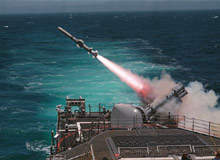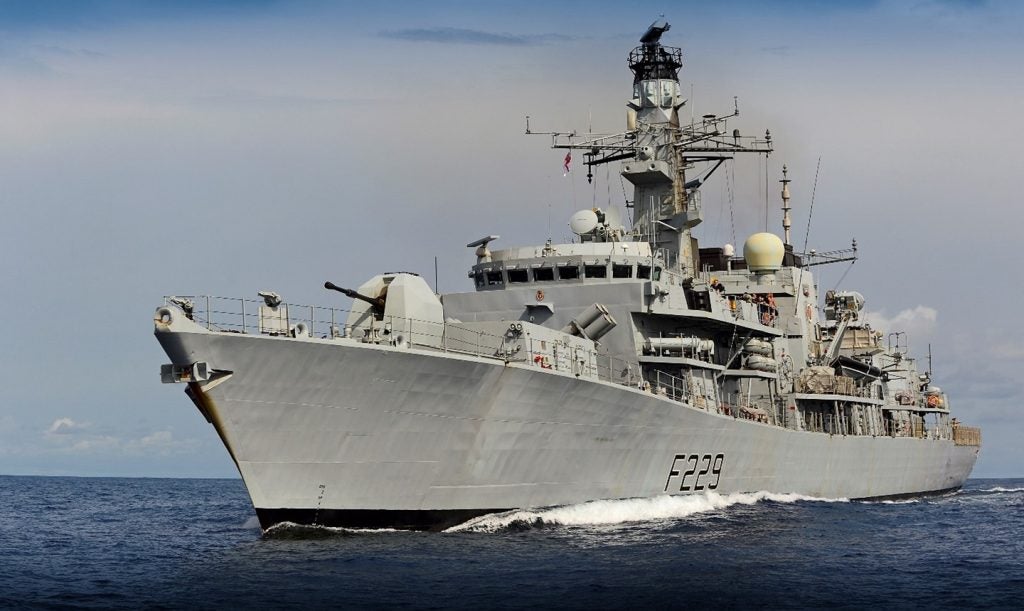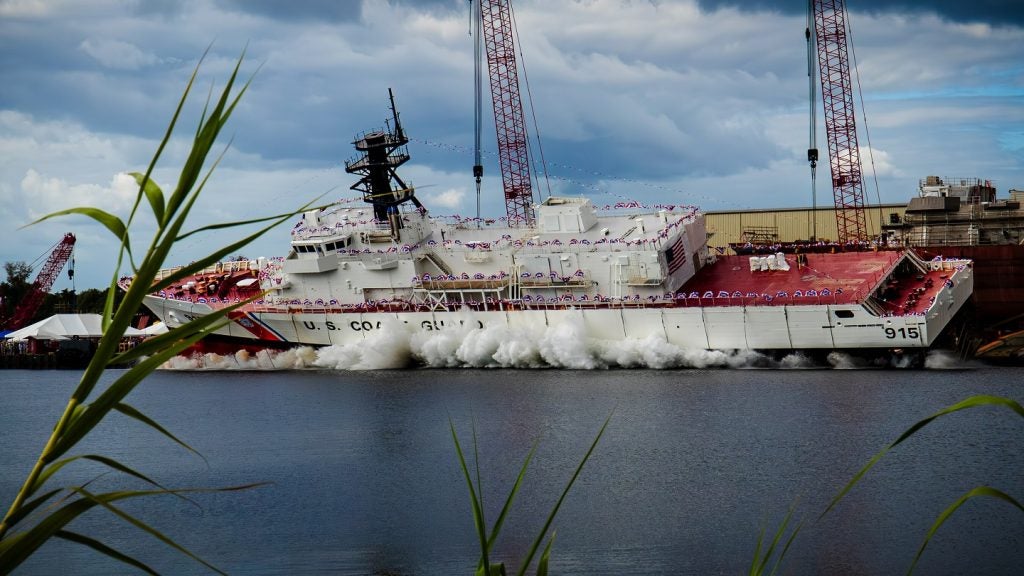
Nearly three decades on from the most significant naval conflict since World War II – the 1982 Falklands War – the lessons remain the same. Events in the South Atlantic clearly demonstrated the critical importance of airborne early warning (AEW) and established the airborne missile as the pre-eminent weapon of modern combat. At the time the British Royal Navy had no over-the-horizon capability, obliging the naval task-force to deploy a number of vessels to serve on radar picket duty – ultimately leading to the loss of the destroyer HMS Sheffield.
Naval surveillance has, inevitably, moved on since then to match the multiple and changing roles demanded of today’s navies. The latest generation of systems reflect the burgeoning advances in sensor technology, processing and network structures, the IT component providing essential integration infrastructure for multiple vessel inputs. ‘World Markets for Naval Radar and Sonar’ – a report by the research and consultancy firm, Frost & Sullivan – puts the revenue forecast for sensors alone at $1,750.4m for 2008, representing an almost three-fold increase on ten years earlier.
These figures are not surprising. Effective surveillance technology is central to the control and manipulation of the modern battlespace. Implicit in the concept of an area within which a navy can be confident of its ability to detect, track, engage and neutralise potential threats before they present a danger, is the simple need to perceive the enemy before they perceive you.
Open-sea surveillance
How well do you really know your competitors?
Access the most comprehensive Company Profiles on the market, powered by GlobalData. Save hours of research. Gain competitive edge.

Thank you!
Your download email will arrive shortly
Not ready to buy yet? Download a free sample
We are confident about the unique quality of our Company Profiles. However, we want you to make the most beneficial decision for your business, so we offer a free sample that you can download by submitting the below form
By GlobalDataFor traditional blue-water fleets (in particular those involved in projection of power roles away from home) surveillance within the battlespace is critical and advances in target detection and tracking have added significantly to the sum of naval competencies. Although the concept of systems such as 3D maritime medium-range radar (MRR), for example, is well established, the resolution and accuracy now being developed is wholly unprecedented.
See Also:
The new Artisan radar, for instance – a novel UK-designed and manufactured system which will be used on Royal Navy vessels, including the two new aircraft carriers, HMS Queen Elizabeth and HMS Prince of Wales – can track a billiard ball-sized target at 20km.
Performance under adverse weather conditions is another key area, especially for open-ocean vessels, and continues to catalyse development in radar surveillance technologies. In February 2008, a year after successful trials demonstrated the superior performance of the South African RSR 210N in detecting both surface and air targets in a poor operational environmental, the Royal Norwegian Navy selected the system for its new warships.
To be produced by Reutech Radar Systems in conjunction with Bergen-based Electronicon, RSR 210N radar will be fitted to the new Fridtjof Nansen-Class frigates to support helicopter operations and other surveillance activities.
Tracking targets represents one aspect of battlespace superiority, the ability to engage them, however, is another. In January 2008, Boeing announced the $73.7m US Navy contract to design and develop the Harpoon block III missile – the latest development for this all-weather, over-the-horizon, anti-ship missile system since its introduction in 1977. Using active radar homing guidance and originally intended as an open-ocean weapon, previous upgrades have seen it gain improved littoral capability and be further extended to include a land-strike role.
Scheduled for initial operational capability early in 2011, Harpoon block III will upgrade existing block 1C missiles and their command launch systems, providing a next-generation system to meet surface warfare threats. This latest incarnation adds GPS and a precision moving target solution – allowing data-linked in-flight navigational updating and real-time target discrimination – and is designed to integrate with future network architectures and anticipated range and launch enhancements.
Close-quarter security
With the engagement window for an incoming missile measured in seconds, long-range detection, and removal, of the platform before launch is an obvious priority. However, while this remains an issue for at-a-distance naval engagements, many of the operations today’s forces are increasingly being tasked to perform demand the ability to discern threats in very much nearer proximity.
Meeting these challenges places exacting demands on radar and surveillance to provide the necessary additional layer of vigilance to support close-in operations and detect small target surface vessels. One system recently demonstrated to be able to achieve this is the SPY-1 radar from Lockheed Martin – a central component of the multi-role Aegis weapon system, currently in service on 85 vessels around the globe. The newly developed extreme short-range (ESR) mode for SPY-1 can detect and acquire targets with seamless transitions from standard to ESR mode, enabling normal 360°, surface, horizon and air surveillance to be maintained.
Even more difficult to detect and defend against than close-in small surface vessels, the clandestine swimmer presents a particular problem for surveillance. With the rise of anti-terrorist actions and the concomitant likelihood of being subjected to acts of asymmetric warfare, measures to identify and neutralise this threat have also increasingly appeared upon the procurement agenda.
The US Navy’s new underwater protection system – integrated swimmer defence (ISD) – is one solution which is currently some way along its development path. Designed for use in both US harbours and expeditionary applications, ISD will offer unparalleled vessel protection. The system includes a 10in (25cm) diameter, 18in (45cm) long active sonar head to spot divers and a combined radar and electro-optics / infrared (EO/IR) device to scan for surface swimmers, linked by integrating software. Yielding real-time data, the system promises swift detection to facilitate fast response, which includes an associated non-lethal underwater air gun – said to deliver ‘a good thump’ to intruding divers.
A prototype expeditionary ISD was completed in September 2007 by a joint navy / industry collaboration; two systems are scheduled to be constructed for full evaluation by 2009.
Developing trends in surveillance
For western navies, the post-Cold War period has been characterised by an operating environment predicated on new priorities and evolving threats. With naval forces increasingly deployed in policing actions to confront a range of smaller, and at times highly organised adversaries such as pirates, traffickers and terrorists (often in coastal waters rather than the open ocean) the rules of the game have changed.
This has led to a growing emphasis on littoral capability and coastal surveillance to combat the potentially wide-ranging dangers of asymmetric war. Missile-equipped improvised weapons platforms such as civilian boats or shore-side trucks present an elusive enemy; for many navies the response has been to invest in littoral combat ships – light, versatile and well armed. In many ways it is the logical extension of the US Navy’s ‘street-fighter’ concept – small gunboats designed to fight irregular foes, up close, along hostile coastlines.
This new generation of warships will rely on the use of wide-area sensing, secure communications and technological superiority as much as weight of ordnance to prosecute their mission. From the perspective of surveillance, this trend seems likely to mandate two areas of development.
On the one hand there will be a need for improved sensors and innovative systems to equip them and improve detection and response capabilities to deal with the unique nature of threat to be encountered.
On the other, low observable and counter-low observable technology will become increasingly relevant as the technological competency of the opposition continues to grow. Such stealth technology is already here with vessels such as the Swedish Visby Class corvettes and Norway’s Skjold Class air cushioned catamaran corvettes and in June of this year, the US Navy awarded Materials Sciences Corp. $24.6m to research improved performance of radar absorption materials.
As the range of anti-ship missiles continues to grow and improvised launchers become simpler, it is inevitable that mission delivery will increasingly depend on matching better vision with lowered visibility.






